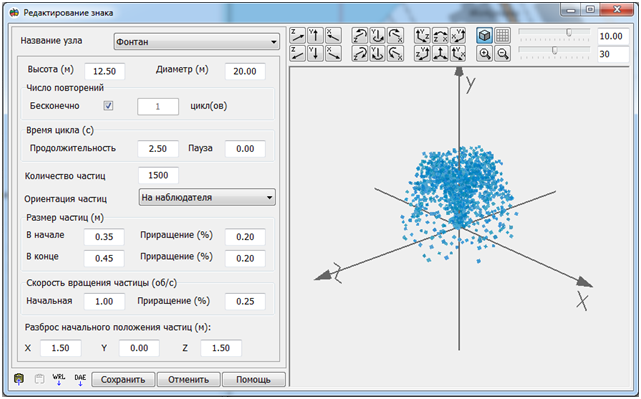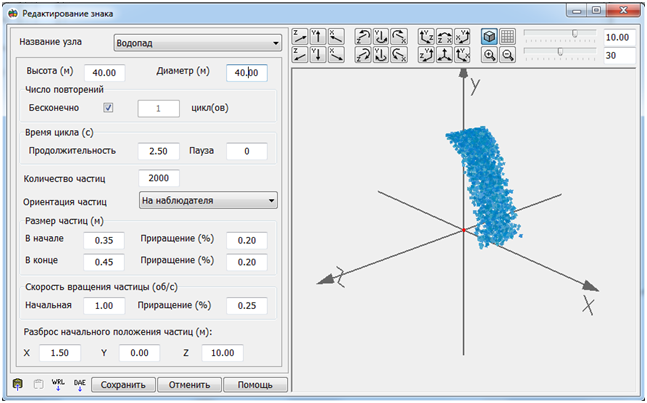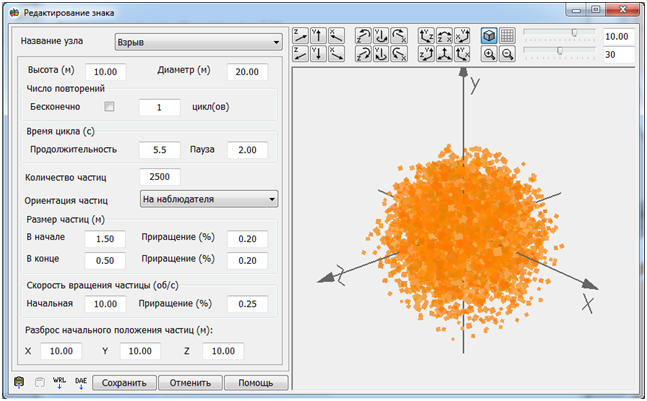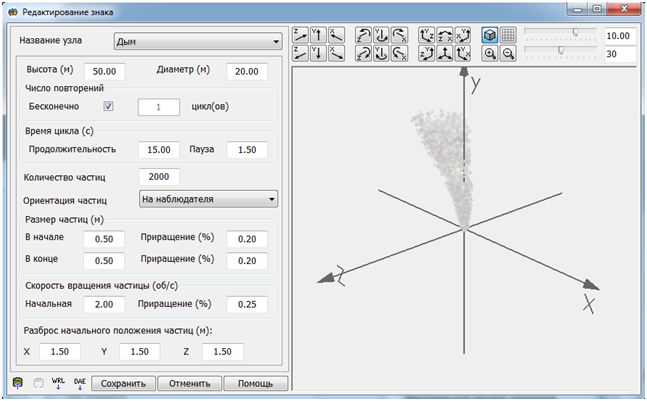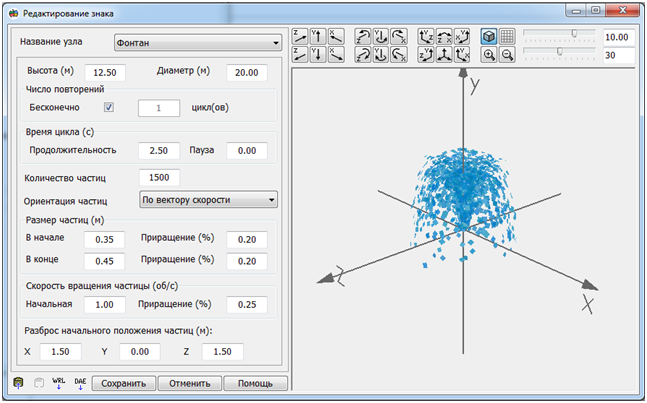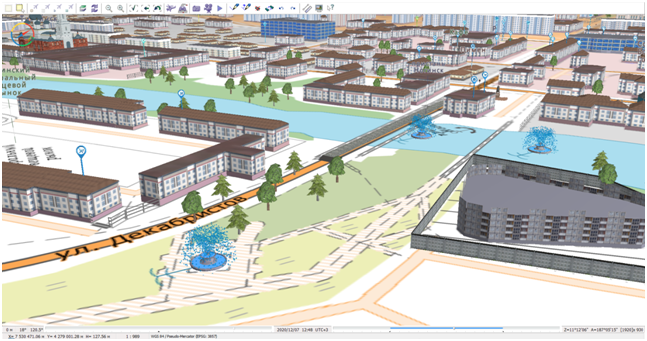Animated nodes of mark |




|
|
In GIS "Panorama" the following types of animated elements are supported: - Fountain (Fig. 1); - Waterfall (Fig. 2); - Explosion (Fig. 3); - Smoke (Fig. 4).
Animation of fountain/waterfall/explosion/smoke is based on the generation of particles (for example, the spray of a fountain) and their movement according to certain laws. During their life, particles can be exposed to gravity, change the size, color, etc. The type of the animated element and the display parameters are set by the user in the Mark editing dialog. To select an element type, use the Node name drop-down menu in the upper left part of the window (Fig. 1). The next two parameters (Height and Diameter) have different meaning for different element types. For an element of the fountain type (Fig. 1), the Height (m) parameter defines the height of the particles rise relative to the zero of the mark, the Diameter (m) parameter - the diameter of the fountain at its base.
Fig. 1. Animated element of type a fountain:
For a waterfall, the Height (m) parameter determines the height from which the particles will fall, and the Diameter (m) parameter sets the flight distance of the particles.
Fig. 2. Animated element of type a waterfall:
For an explosion, the Diameter (m) parameter sets the diameter of the spherical area in which this effect will act.
Fig. 3. Animated element of type the explosion:
For smoke, the Height (m) parameter defines the height of the particles rise relative to the zero of the mark, the Diameter (m) parameter sets the diameter of the smoke column at the specified height.
Fig. 4. Animated element of type a smoke:
Particles number parameter sets the total number of particles emitted by the element during one animation cycle. Duration parameter affects the speed of movement of the particles. With the Pause parameter, the user can pause between animation cycles. During the pause, the nucleation of new particles does not occur. Number of repetitions parameter determines how many animation cycles will be played for an element after building a 3D terrain model. For elements of type the fountain/waterfall/smoke, it is recommended to set an infinite number of repetitions. Particles can be oriented towards the observer or change their orientation in space when moving along a trajectory. In the second case, the orientation of the particle is determined by the velocity vector at the current moment of time (Fig. 5).
Fig. 5. Orientation of particles by the velocity vector for an element of type a fountain:
By means of group of parametres the Particle size (m), the user can set the particle size at the beginning and at the end of life. Here, the Increment parameter defines a limit on how much (in percent) the size of an individual particle can differ from user-specified values. It is possible to set the rotation of particles around their axis in the course of their movement along the trajectory. It can be done by the group of parameters the Particle rotation speed (rot/s). Scatter of the initial position of the particles (m) determines the area (relative to the zero of mark) in which the generation of new particles occurs. The sizes of the area are set in meters. After the user selects the parameter values, they must be saved by clicking the Save button. The visual decoration of elements (particle color, transparency, imposing of texture) can be changed on the Decoration bookmark of the Edit mark dialog. After saving the template of a mark, new animated elements will be displayed on a 3D terrain model (Fig. 6).
Fig. 6. Displaying elements of type a fountain on three-dimensional terrain model:
|
